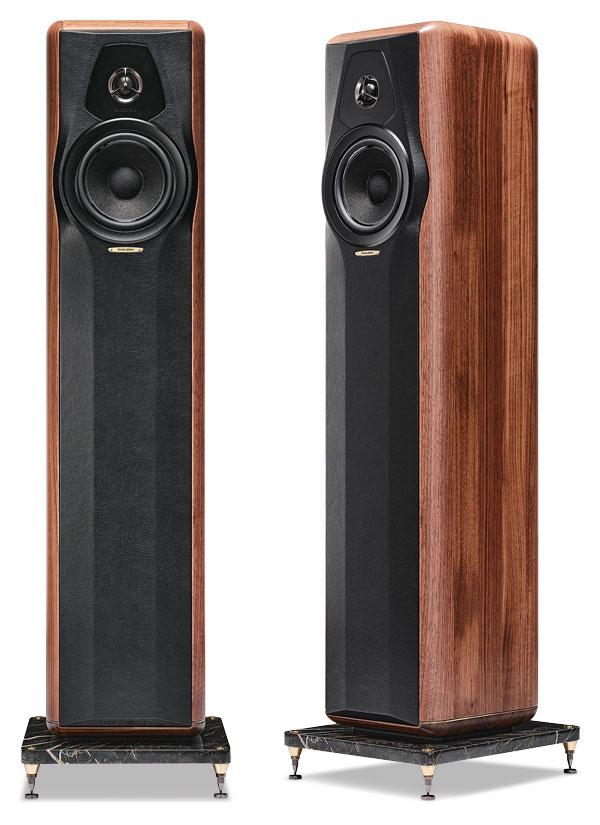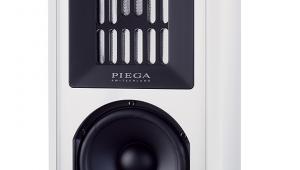Sonus faber Maxima Amator Loudspeaker

 First floorstander in Sonus faber's Heritage range takes its Electa Amator III standmount and raises it up high
First floorstander in Sonus faber's Heritage range takes its Electa Amator III standmount and raises it up high
What have you been doing throughout the various lockdowns? Looks like the R&D team at the Sonus faber factory in Arcugnano, Italy, took the opportunity to spend some time revisiting a project it had been keeping on the back burner for a while – a two-way floorstander with a solid wood enclosure to slot into its Heritage collection above the Minima Amator II and Electa Amator III [HFN Jul '19] standmount models.
The concept of the £14,500 Maxima Amator speaker looks simple enough: if you're going to take up floorspace with a compact speaker on a substantial stand, why not fill it with a floorstanding model? The listening-room real estate occupied is much the same at around 300x350mm (wd), and it's not even that much taller – 112cm for the Maxima versus 109.5cm for the Electa Amator III on its optional stand.
Meet The Cabinet
Rather than add a second woofer into the cabinet, Sonus faber has retained the same two-way driver complement as the standmount, allowing the 180mm air-dried cellulose pulp/fibre bass/mid unit to work into an increased cabinet volume. The custom 28mm silk-dome tweeter is the company's DAD (Damped Apex Dome) model, with a three-vane diffuser/phase plate and neodymium-magnet motor system, all loaded into a solid spruce 'labyrinth chamber' behind.
The single bass/mid unit does not have access to the entire internal void, however, because a slanted internal divider isolates the lower third of the cabinet. This is filled with a resonance-damping material, also lowering the centre of gravity, and hosts a third 'acoustically isolated' box for the new 'Interactive Fusion Filtering' crossover...
This is a series-connected crossover with its high-pass arm influencing the low-pass arm and is all-new for the Maxima floorstander despite it employing the same drivers. In this latest speaker the crossover point is dropped to 2.1kHz from the smaller model's 2.5kHz, and the new speaker has just a single set of terminals, rather than the bi-wire/bi-amp provision elsewhere in the range. This new third-order crossover cannot be 'split' as easily.

Rear Window
The choice of crossover components was also fine-tuned over long listening and testing sessions – Sonus faber selecting Litz wire coils impregnated with wax to damp vibrations, combined with metallised-polypropylene capacitors and non-inductive resistors. The design team are so proud of this new filter that they've displayed it in a window at the base of the rear panel. Not unlike some Italian supercars that make a statement of their engines beneath a rear window!
What first grabs the attention about the Maxima Amator, apart from that slightly unusual 'two way in a big cabinet' design, is the sheer quality of the finish, as one might hope for the money. As is the Sonus faber way, the entire enclosure is handcrafted from solid walnut, rather than a layer of veneer over a material such as MDF or ply, giving a combination of solidity, rigidity and inertness, with the front and rear baffles finished in soft leather.
That construction is common enough on smaller Sonus faber models, but the larger ones tend to be made up from multiple layers of wood sandwiched together in a stack. The long single panels of the Maxima Amator brought their own difficulties, not least from the inevitable ageing of the wood over time which, in extremis, could cause deformation or even cracking. Employing a combination of in-house wood-drying, CNC-machining to achieve tighter tolerances and the use of structural ribs attached with flexible glue, Sonus faber is confident these problems have been avoided.
Adding to the stability of the speaker is the substantial – and hefty – marble plinth on which it stands. Unlike the white Carrera marble of the stands supplied for the smaller Amator models, this is in darker Port Saint Laurent marble, quarried in Morocco and toning well with that leather-clad front baffle and the dark walnut cabinet. An interesting touch is a brass nameplate inset into that plinth though, ordinarily, you'll never see it as it's fixed on the underside of the marble.
























































